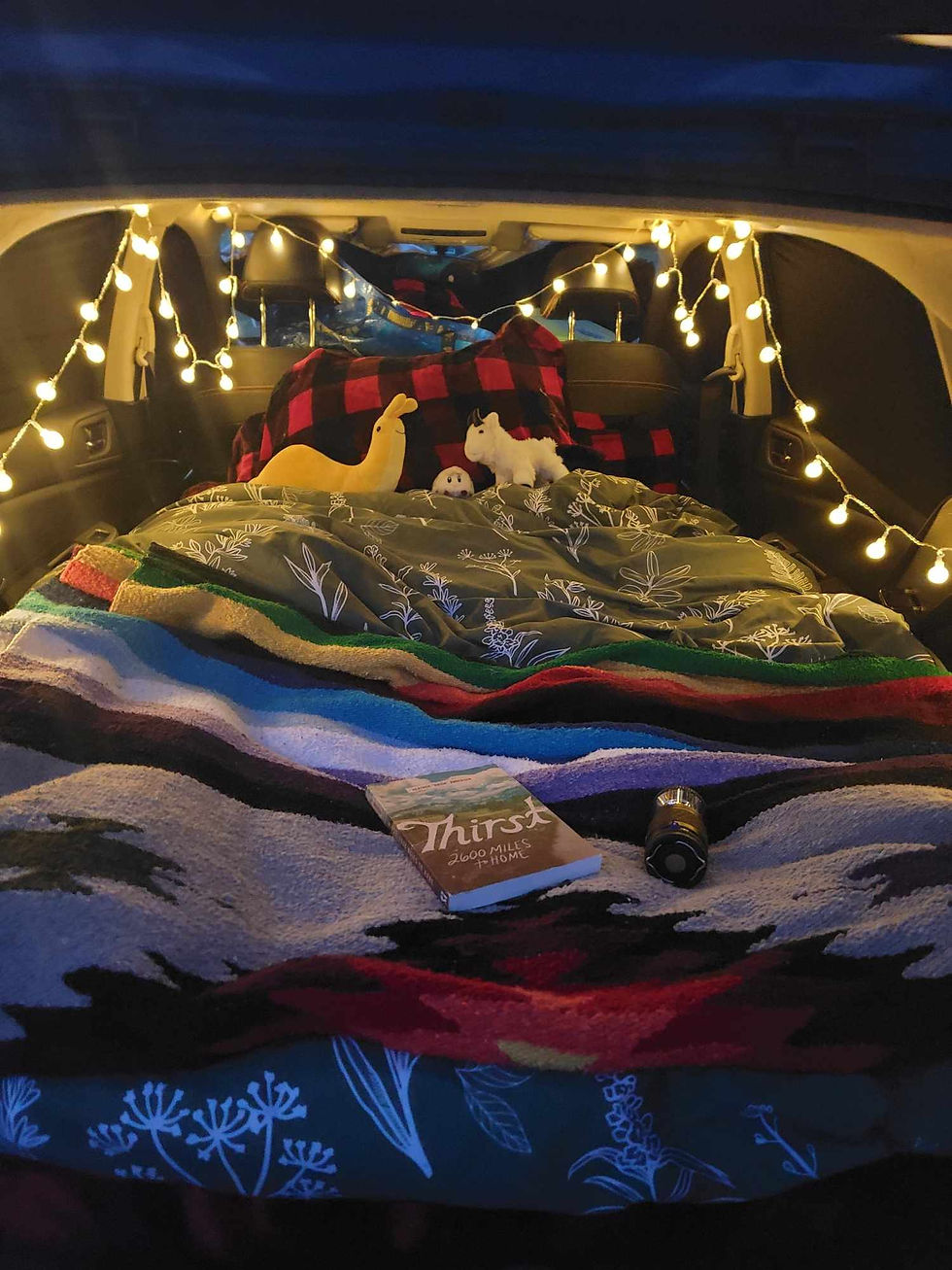Rain measurements: what they look like + safety prep tips
- Cathy Gehris

- Oct 12, 2023
- 3 min read
Updated: Oct 14, 2023
You took the first step to prepare for your hike and read the weather reports. You see measurements of rainfall. But what do those inches of rain look like when they are falling from the sky?

At 0.05 inches of rain per hour, you can expect just light drizzle. Here in the Pacific Northwest, that's pretty typical for a large part of the year. You may not even feel if if hiking in the forest. Hike on!
In the weather forecast example listed above, the prediction is between a quarter of an inch to a half inch of rain per hour. In the next two videos, you can see how 0.25 inches of rain per hour still is somewhat mild, but moving closer to a half of an inch of rain would be less ideal to recreate in.
Consider how factors like tree cover versus an open-air exposed trail, plus wind speed and temperature will affect your experience on the trail.
At one inch of rain per hour, you can see conditions would quite unpleasant. Some flooding on the trail will occur. Stream levels will raise. This is especially important to note if you plan to cross a stream on the way to a destination and the return back via the same stream - as it will likely be higher than the first time you crossed.
At over an inch per hour, you should consider taking cover, locate higher ground, and find a place with protection from the elements for your safety.
READING THE WEATHER REPORT
When heading out to the mountains, it’s important that you are looking at MOUNTAIN weather reports, not CITY reports. A great place to see mountain weather reports is NOAA: https://forecast.weather.gov/
If you live in Washington state, the easiest way to get the report you need, is by clicking the See weather forecast link from the trail page on WTA.org – this will take you directly to the location of your trail on the NOAA site without extra steps.


Weather reports typically are most detailed for the most recent three days, with less detailed reports after that.

Take an even closer look at what you can expect during your adventure, by clicking the Hourly Weather Forecast link located below the detailed daily forecast.

By default, useful weather features will be preselected. Adjust the 48-Hour Period Starting date and time to view the details for the day of your adventure.

If you were to decide to hike on either Friday, Saturday or Sunday, which day would you choose, based on the hourly weather report below?
Weather on Friday is clear for most of the day, with some very light drizzle rolling in around 5PM. Rain still quite light on Saturday, but if you were staying the night - rain gets heavier at a quarter inch per hour in the evening, before getting lighter during the earlier AM hours.

The most important thing to understand is that weather reports are predictions and weather can change quickly. Check weather reports regularly – the night before your hike, and the morning before you go out. It’s not uncommon for reports to change up until the day of your adventure!
BE AWARE OF POTENTIAL RISKS
No adventure comes without risks, but awareness and preparation can save lives.
Slick roads to and from trailhead
Slippery rocks and leaf covered trails
Mudslides – unstable ground on the trail and on the road
Creek water levels can be higher, fast moving water can be dangerous
Flash floods in canyons
Hypothermia – stay dry to stay warm
Dehydration – hikers tend to forget to drink water in cooler, wet conditions
WET WEATHER GEAR
Avoid Cotton – it holds water and increases your risk of hypothermia. Stick with wool or polyester
Choose a puffy jacket that has a synthetic fill instead of down which will lose its ability to insulate when wet. Down tends to be warmer than synthetic, so another alternative is to layer it under a waterproof layer
Waterproof layers – jackets and pants. These shells go over your other clothes to keep you dry. Goretex is very reliable. It’s important to note that waterproofing does wear off, so consider re-waterproofing your gear with Nikwax
Spare dry clothes
Trash bags to line your backpack with to keep your things dry
Ziplock bags to keep smaller items dry
Gaiters to keep mud and water out of your socks and boots
Rain hat with a brim
Waterproof boots
Thanks for reading! Have a question or thought to share? Comment below!
Help support the Mountains Sea & She community by clicking the Buy me a Coffee link below! Your donations keep our site and group running!


Comments